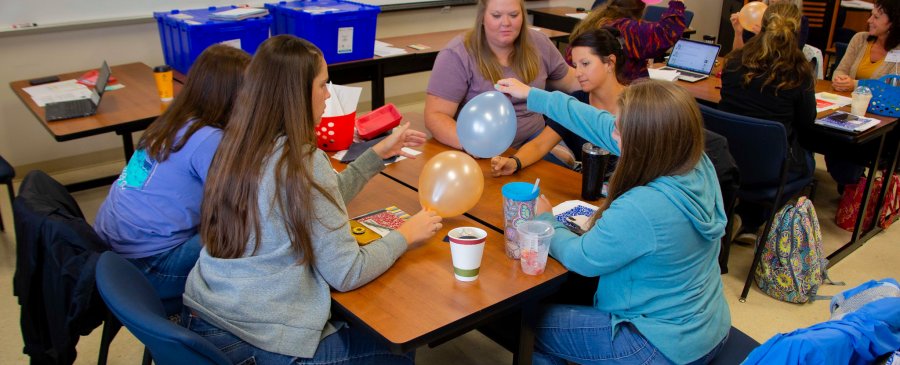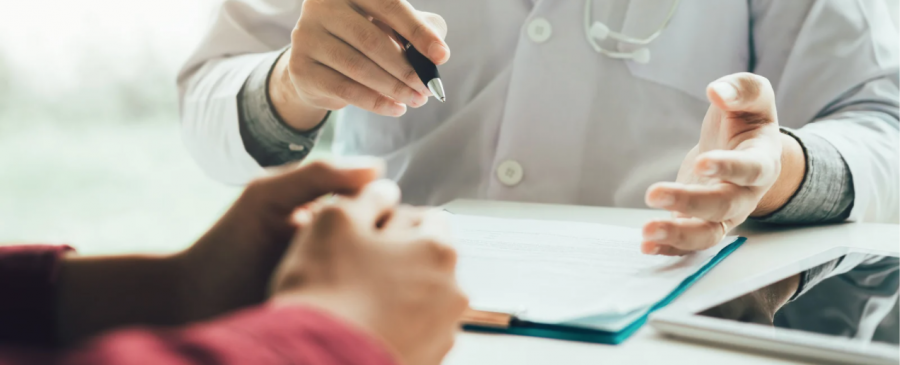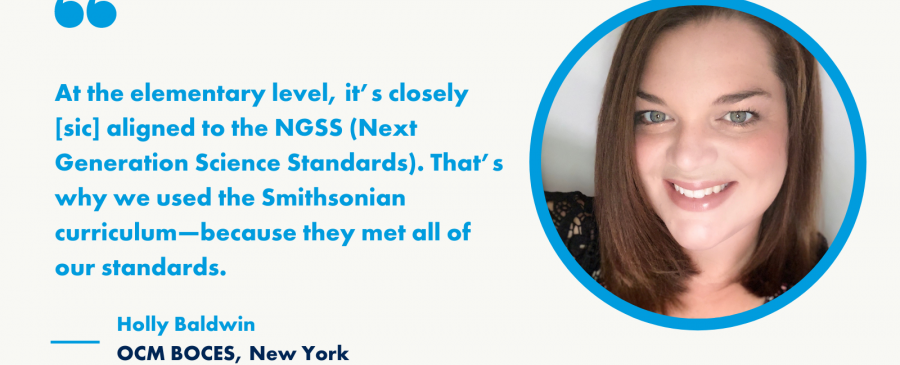SSEC’s 40th! On May 6, 2025, SSEC’s Lapp-Keiser Director, Dr. Carol O’Donnell, and colleagues celebrated 40 years of excellence in Science Education. The all-day extravaganza began at NMAAHC for an introductory morning of hands-on learning with close friends of the Center participating with staff as they engaged school groups in a set of SSEC hands-on learning experiments. This then spilled into a wonderfully warm afternoon of STEAM tours across the Smithsonian, with a huge thank you to NMNH and NZCBI for their expertise in leading the tours.
DC <> SxSW! Director Carol O’Donnell attended the annual South by Southwest Education Conference in Austin, Texas, and sat on a panel where she discussed to break down solutions on career-focused credentialing, K-12 STEM experiential learning, and partnerships that connect talent to opportunity.


Written by Kristine Novero McCaslin
Engaging lesson plans, assessment questions, hands-on activities, and lab experiments. These are the key components I consider when planning science lessons. But as I have evolved as a science teacher, I realized that culture is also an integral component in helping us understand and connect to the world around us.
Sustainability Education at the Smithsonian National Education Summit! Dr. Carol O’Donnell, along with her collaborators Frank Niepold (NOAA) and Anita Krishnamurthi (Afterschool Alliance) held a session during the Smithsonian National Education Summit titled Educating for Sustainable Development: Teachers’ Perspectives.
Tales from the Himalayas: The Smithsonian Science Education Center hosted the Smithsonian Women’s Committee, which featured a presentation from former National Geographic photographer Anne Keiser. Anne shared the fascinating story of her personal relationship with Sir Edmund Hillary, who was the first to summit Everest along with his climbing partner, Tenzing. Anne detailed how, after the historic summiting, Hilliary pledged his fame and years of his life to supporting the Sherpa population, without whom modern Everest expeditions would be impossible.
Oak Ridge Associated Universities: Director of the Smithsonian Science Education Center (SSEC) Dr. Carol O’Donnell attended the annual meeting with Oak Ridge Associated Universities in Knoxville, TN. Her panel comments and talk drew on the Smithsonian-Gallup survey data “Educating for Sustainable Development: Perspectives of U.S. and Global Educators” and the work of the “Smithsonian Science for Global Goals” project to advance students future-ready skills and knowledge.
Colgate University visits the Smithsonian: On January 17th 30 undergraduate students traveled to the Smithsonian with their professor Dr. Karen Harpp of the Earth & Environmental Geosciences Department of Colgate University. The students spent the morning at the Smithsonian Science Education Center discussing climate education. Dr. Carol O'Donnell presented to students after presentations by Pierre Comizzolli and Ashley Naranjo.
In October of 2019, the Smithsonian Science Education Center (SSEC) was awarded an early-phase Education Innovation and Research (EIR) grant from the U.S. Department of Education. We were excited to begin our project providing Smithsonian Science for the Classroom curriculum and professional development to teachers. How could we have predicted that mere months later a global pandemic would wreak havoc on classroom learning worldwide?
Start the school year with free sustainability-minded, innovative, and inclusive K-12 educational resources from the Smithsonian Science Education Center, our fellow Smithsonian Institutions, and STEM agencies from across the federal government.
The Smithsonian Science Education Center (SSEC) launched the Smithsonian Science for North and South Carolina Classrooms program in 2019 with a U.S. Department of Education early phase Education Innovation and Research (EIR) grant.
The Smithsonian Science Education Center (SSEC) launched the Smithsonian Science for North and South Carolina Classrooms program in 2019 with a U.S. Department of Education early phase Education Innovation and Research (EIR) grant.
Smithsonian Science Education Center Director, Dr. Carol O'Donnell, delivered the commencement speech at the University of Pittsburgh December 2022 Graduation. Dr. O'Donnell is at 1983 graduate of the University of Pittsburgh's teacher education program. Details on the graduation can be found here: https://www.education.pitt.edu/student-services/graduation/d...
You may be familiar with the action-focused aim of the Smithsonian Science for Global Goals guides. As explained by Laurie Rosatone, Division Director of Curriculum, Digital Media, and Communications at the Smithsonian Science Education Center (SSEC), the goal is “to have anyone picking up these guides feel like there is something that they want to and can do and that they can act in their local communities around these huge global challenges.”
The Smithsonian Science Education Center (SSEC) launched the Smithsonian Science for North and South Carolina Classrooms program in 2019 with a U.S. Department of Education early phase Education Innovation and Research (EIR) grant.
Director of the Smithsonian Science Education Center Carol O'Donnell delivered the lightning talk, "ESD for ESG: Education for Sustainable Development," at the 2022 Global Talent Summit in Washington, DC, on October 5, 2022. The Global Talent Summit (GTS) is the premier space for multi-disciplinary stakeholders from the private sector, policy, academia, and innovation to come together to discuss the trends and solutions for the future of work and education.
The Smithsonian Science Education Center (SSEC) launched the Smithsonian Science for North and South Carolina Classrooms program in 2019 with a U.S. Department of Education early phase Education Innovation and Research (EIR) grant.
Description: Today, educators are using the UN Sustainable Development Goals (SDGs) to help
Just a few months ago, I was scouring the Internet as a high school senior, trying to find a way to spend my summer before starting my freshman year of college. I have always been drawn to the Smithsonian, from its thriving museums and centers that share ideas to the expansive network of researchers creating new knowledge. I knew I wanted to contribute to this amazing community before I left the greater Washington D.C. Area.
Creating an inclusive environment is something that I strive for. Not only do I work towards making sure my classroom is a safe place, but I also work to make sure that if any student wants to perform an experiment or participate in an activity, they can perform that activity as best they can.
The following recommendations are based on personal observations and experiences as well as, suggestions I’ve received from friends and students with disabilities. I offer them as a way to start to engage students with disabilities and create a more inclusive learning space:
As an educator, I make it a goal to lead by example. Whether it is showing up for my students on a day where I am not feeling 100%, showing up when I have a bad day, or owning up to my mistakes, I make it my goal to show my students how to navigate a world that can be cruel at times. As somebody who cannot hide their disability – a 75lb Labrador is pretty hard to conceal – I must face my situation each day, head on. I receive questions, I see the stares, and I see the doubt in people who think I cannot.
Heidi Gibson works to develop engaging and future-forward curriculum for the Smithsonian Science Education Center. Recently, she helped develop the Sustainable Communities guide as part of the Smithsonian Science for Global Goals project for use in the #SmithsonianInFrance program. Learn more about this guide and how a sustainable-centered curriculum supports global students on their paths toward creating an equitable, sustainable, and connected future.
_____________________________
David Dussort and his Seconde 6 students at Sainte Marie Bastide High School in Bordeaux, France, participated in the U.S. Embassy in Paris and Smithsonian’s cross-cultural program #SmithsonianInFrance. Learn more about their experience and how the lessons have shaped their way of thinking globally and acting locally.
——————————
Can you describe your participation in the #SmithsonianInFrance program and tell us about a few highlights?
 U.S. Ambassador to the French Republic and to the Principality of Monaco, Denise Campbell Bauer.
U.S. Ambassador to the French Republic and to the Principality of Monaco, Denise Campbell Bauer.
Can you tell us how this partnership between the Smithsonian and U.S. Embassy Paris came about?
The Embassy of the United States of America in France and the Smithsonian Institution (Office of International Relations, Smithsonian Science Education Center, and Earth Optimism) have developed a unique program that allows students, educators, and professionals to reach across the globe to explore and discuss new approaches for living, learning, and working more inclusively and sustainably.
Smithsonian Science Education Center volunteer Pam Divack sat down with Dr. Panagis Galiatsatos from Johns Hopkins Medical Center and Dr. Melvenia Martin from Ochsner Health to discuss their experiences leading COVID-19 vaccine education in their communities.
Below are their biggest pieces of advice and suggestions for how healthcare leaders can collaborate with their communities to advance youth-focused vaccine education, and how they use the Smithsonian Science Education Center’s Vaccines! guide in their communities.
 Adult male mayflies have greatly enlarged eyes, which they use to locate females in the mating swarms. Photo: Dave Funk, Stroud Water Research Center
Adult male mayflies have greatly enlarged eyes, which they use to locate females in the mating swarms. Photo: Dave Funk, Stroud Water Research Center
Mating Dance
In 2021, the Smithsonian Science Education Center (SSEC) released the “Vaccines!: How can we use science to help our community make decisions about vaccines?” community response guide. The guide is designed to help young people learn about vaccines, share their knowledge with their community, create tangible ways to help their community make informed decisions in this challenging time, and understand the best places to find additional information on the topic.
Vaccines for kids are here.
On Friday, October 29, FDA authorized Pfizer’s COVID-19 vaccine for young people ages 5-11, and on November 2, CDC issued recommendations that all eligible children should get vaccinated. As a result, young people are now able to receive their COVID-19 vaccines.
However, many parents are still hesitant to vaccinate their kids. New data from the Kaiser Family Foundation found that only 27% of parents in the U.S. say they will get their children ages 5 to 11 vaccinated “right away,” and 30% say they “definitely won’t.”
Holly Baldwin is a professional development provider who specializes in elementary science education for OCM BOCES—an organization that supports more than 20 school districts in New York through their science program. Baldwin works directly with teachers to provide professional development on the Smithsonian Science for the Classroom program (SSftC).
- 1 of 6
- next














